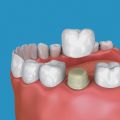Top 6 Myths About Plastic Surgery

Plastic surgery is a specialized field of medicine focused on altering, enhancing, or reconstructing the human body. It encompasses a variety of surgical procedures designed to improve aesthetics, restore function, or achieve both. Despite growing public awareness and acceptance, several myths about plastic surgery persist. Misconceptions surrounding cost, the complexity of procedures, and expected results contribute to the stigma associated with this field. Here are six common myths about plastic surgery:
1. Plastic surgery is only for vanity
Many people still hold the common belief that plastic surgery is purely driven by vanity. While aesthetics are certainly a key factor for many patients, the psychological and emotional benefits should not be overlooked. Procedures such as breast reconstruction after a mastectomy, scar revision, and gender confirmation surgery can have a profound, life-changing impact. Plastic surgery is not just about enhancing appearance—it plays a vital role in restoring confidence, improving quality of life, and helping individuals regain a sense of self.
2. Plastic surgery is risky and unsafe
While every surgical procedure carries some level of risk, advancements in modern plastic surgery techniques have significantly reduced the likelihood of complications. When performed by a skilled and experienced surgeon in an accredited facility, plastic surgery is generally safe, with complications being relatively rare. Factors such as a patient’s overall health, the complexity of the procedure, and adherence to postoperative care all play a crucial role in the outcome. For the best results, it is essential to choose a reputable clinic with strict safety protocols and the best plastic surgeons who prioritize patient care.
3. Results look unnatural
One of the most common myths about plastic surgery is that it always results in an unnatural appearance. This misconception is largely fueled by media coverage of extreme cases, which shape public perception and reinforce the idea that plastic surgery leads to exaggerated or artificial-looking results. In reality, modern surgical techniques are designed to create subtle, natural-looking enhancements. The skill and artistry of the surgeon play a crucial role in achieving results that harmonize with a patient’s natural features, emphasizing balance rather than drastic transformation. This contrast between perception and reality highlights the importance of understanding the refinements and advancements in contemporary plastic surgery.
4. Plastic surgery is only for women
Plastic surgery is often mistakenly seen as something only women pursue. However, men also undergo a variety of aesthetic procedures to address medical concerns such as gynecomastia (enlarged male breast tissue), hair loss, and facial aging. The social stigma surrounding plastic surgery for men is gradually fading, with more men recognizing the benefits of enhancing their appearance and boosting their confidence through surgical intervention. Ultimately, plastic surgery is not gender-specific—it is an option for anyone looking to improve their appearance or correct functional concerns.
5. Plastic surgery is only for the wealthy
One common misconception is that plastic surgery is only for the rich and famous, reserved for those with deep pockets. In reality, cosmetic procedures have become far more accessible and affordable over the past decade, dispelling the notion that they are a luxury exclusive to the wealthy. Many clinics now take a more inclusive approach, offering services at prices that accommodate a wider range of budgets. Additionally, financial options have expanded, with flexible payment plans allowing patients to pay in installments rather than covering the full cost upfront, making plastic surgery a viable option for more people.
6. Plastic surgery will last forever
This is a common misconception about plastic surgery. Most procedures are designed to deliver long-lasting results, often providing benefits for many years. However, they do not stop or prevent the natural aging process, and their effects may gradually change over time. As a result, some cosmetic procedures may require occasional maintenance or “touch-ups.” For example, breast implants often need monitoring and, in some cases, replacement. It’s always best to discuss these factors with your plastic surgeon to have a clear understanding of what to expect.
Other articles and publications:
Articles and publications of other companies:
- +1 (646) 270-9836
- Long Island City
- grantny.com











